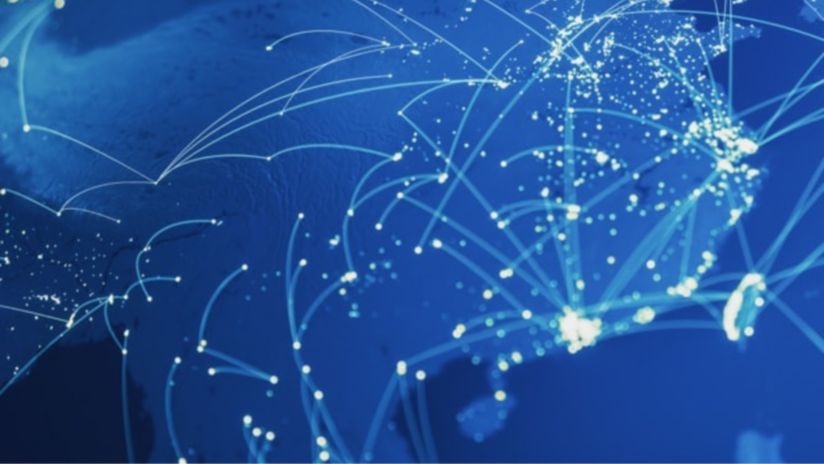Asian connectivity moves East

The year 2020 brought enormous and unexpected change across the globe, and across our telecommunications networks.
It’s no surprise that COVID-19 has heavily influenced the scale and intensity of demand for connectivity, as the world embraced videoconferencing, enterprise cloud applications, and a more digital way of life.
But, more than that, a confluence of macro geopolitical trends has fundamentally altered the landscape carriers are working in.
Policy and regulation are creating tectonic shifts
Shifts in policy and regulation have resulted in a range of trans-Pacific subsea cable reconfigurations in the telecommunications market. The Pacific Light Cable Network (PLCN), Bay to Bay Express (BtoBE), and Hong Kong Americas (HKA) systems have all been reconfigured or are in the process of reconfiguring their routes to land in either Taiwan or Philippines.
As a result, connectivity in and to Asia is no longer being mostly focused on the traditional hubs, but is increasingly moving East in the Asia Pacific.
While markets like Hong Kong, Japan, and Singapore have traditionally seen the most connectivity ingress, new alternatives are expanding.
Driven by geopolitics, environmental constraints, shallow water fishing, and the risks of earthquakes, we have seen increasing demand for alternative transport hubs in Taiwan, the Philippines and Australia.

Eastern promises
Telstra has seen record capacity sales this year in Taiwan and the Philippines, while major customers are increasingly seeing Australia as a gateway to reach Asia – driven by network diversity requirements, regulatory and performance benefits.
Taiwan
Telstra is the leading foreign telecommunications provider in Taiwan, providing approximately 40% of ingress capacity into the country. We saw record capacity growth in the country over the past six months.
We’ve seen growth including:
- Provisioning of more than 15 terabytes of lit and design capacity over the course of 2020.
- Five new subsea cables and reconfigurations have been approved or planned.
- Telstra is progressing a range of strategic projects, including operating as landing party for the HKA cable in Taiwan, the launch of PLCN into Taiwan, and building a new cable landing station in Eastern Taiwan.
- We maintain strong-on-the ground technical and operational teams offering key experience and expertise in engineering and management.
Philippines
Telstra also booked record capacity growth into the Philippines in 2020, driven by our customers’ recognition of the opportunities available in the country.
We’ve seen growth including:
- More than 70 terabytes of lit and design capacity provisioned for customers in 2020, contributing to more capacity sold to the country than ever before.
- Five new subsea cables are planned to land in the Philippines.
- We are also refreshing the C2C segments (5+6) into the Philippines to extend cable life with a program to install brand new repeaters on segment 5 completed in 2020.
Australia
Australia may not have been traditionally used as a route to connect to Asia, but the past year has seen a multitude of US based enterprise and OTT customers benefit from its increased diversity, stability and performance.
We’ve seen growth including:
- The two largest connectivity deals ever done connecting into Australia have been inked in the last few months, both of which were IRU agreements totalling more than two terabytes.
- Development of the Southern Cross Next cable linking Sydney, Auckland and Los Angeles continues apace. The build is on-track to be completed in 2022 and the Northern route is already seeing significant demand.
- Telstra is committed to connectivity across Australia’s frontier – connecting Darwin into Singapore, Indonesia and the US. Watch this space for announcements in 2021.
Your partner to confidently connect to the world, even amid uncertainty
The past year has been beset by uncertainty and volatility – driven not only by a global pandemic, but by ongoing climate concerns, trade stoushes and geopolitical upheaval.
But one thing remains consistent: people want to connect, collaborate and trade simply and effectively with the world. The tumultuous events of the past year have only served to reinforce the need for resilience, diversity and partnership to enable that connectivity and the importance of our industry to facilitate global trade and communication between nations.
Telstra has a long history providing just that. We have more than 70 years’ history of navigating geopolitical headwinds to connect countries and businesses – we were integral to the development of many countries’ first international networks and were a leader in the early days of voice, then data, and now cloud and SD-WAN.
As connectivity continues to move East in the Asia Pacific, we will continue to invest to connect customers to the world.


